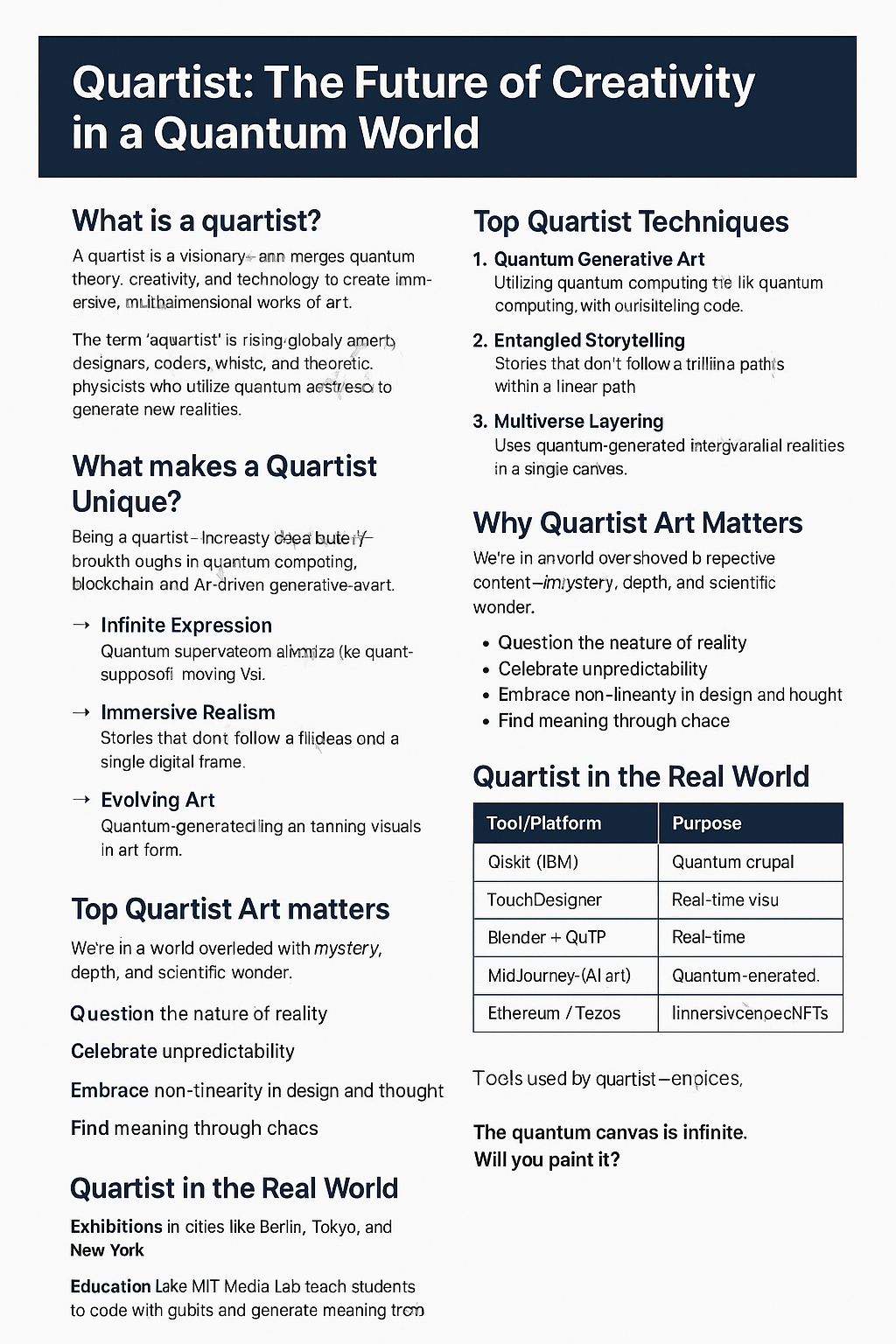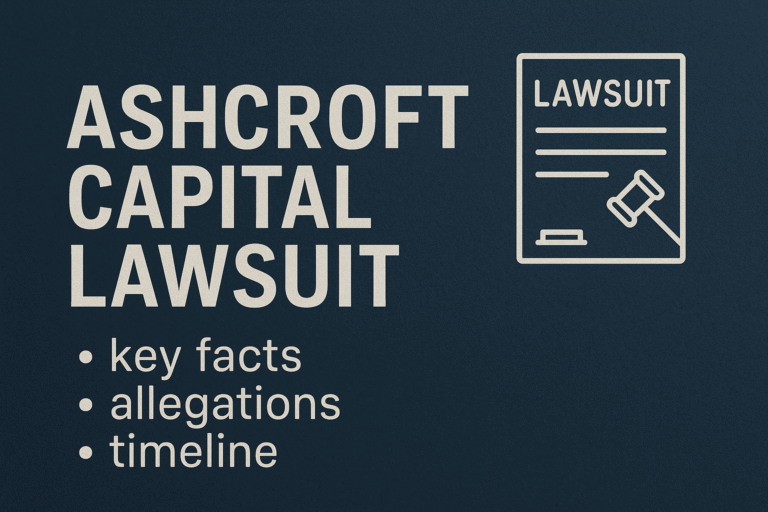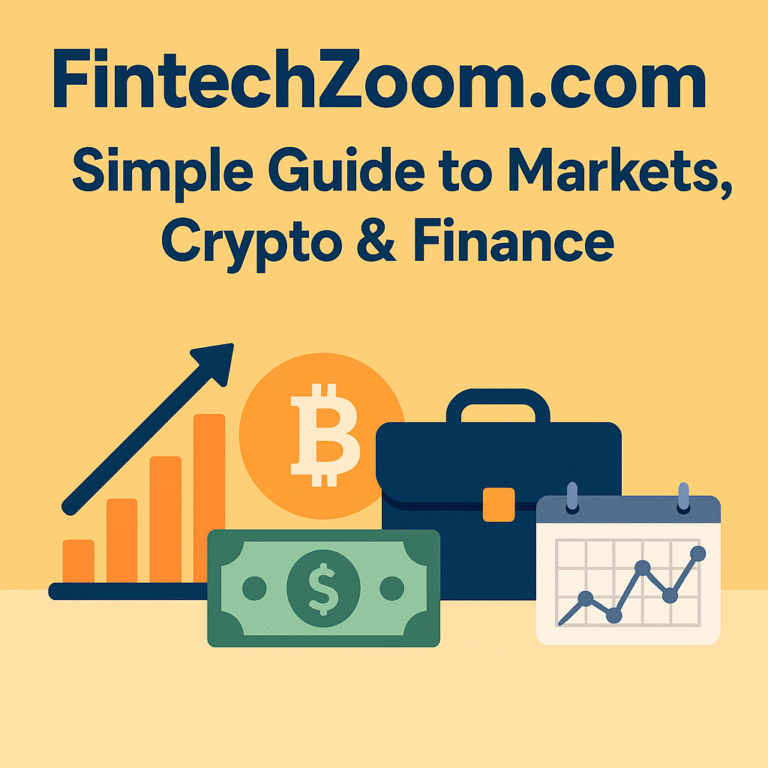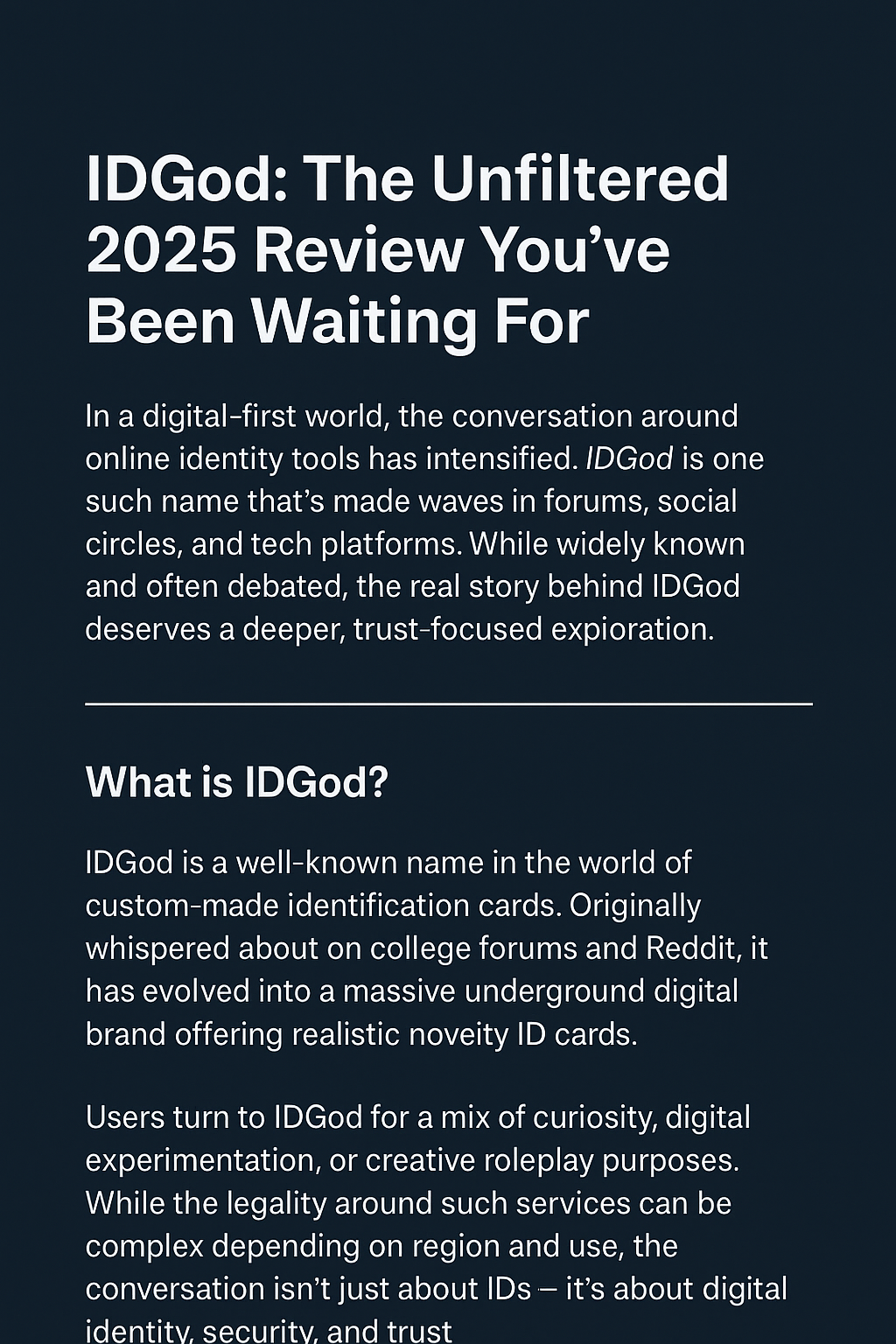What is a Quartist?
A quartist is a visionary—an artist who merges quantum theory, creativity, and technology to create immersive, multidimensional works of art. Unlike traditional digital creators, quartists work within the concept of quantum uncertainty, using algorithms, quantum computing, and entanglement theory as creative tools.
The term “quartist” is rising globally among designers, coders, digital artists, and theoretical physicists who use quantum aesthetics to generate new realities. This field blurs boundaries between art, physics, and artificial intelligence—opening thrilling possibilities.
The Rise of Quartism
The quartist movement is exploding thanks to breakthroughs in quantum computing, blockchain, and AI-driven generative art. Artists now simulate parallel timelines, entangled ideas, and superposed concepts within a single canvas or digital realm.
Why is this revolutionary?
-
Infinite Expression: Quantum superposition allows quartists to create artworks with endless interpretations.
-
Immersive Realism: With quantum-powered rendering, quartist visuals shift based on viewer interaction or even intent.
-
Evolving Art: Quantum randomness means no two displays are the same—art that literally evolves.
What Makes a Quartist Unique?
Being a quartist isn’t about tools—it’s about mindset.
| Trait | Description |
|---|---|
| Quantum Literacy | Understands key quantum principles like entanglement and superposition. |
| Digital Mastery | Works across AI tools, coding languages, and decentralized technologies. |
| Philosophical Vision | Integrates science, ethics, and futuristic thinking into creative works. |
| Emotional Storytelling | Uses emotion and quantum randomness to shape unpredictable narratives. |
Quartists don’t just make art—they create new dimensions of experience.
Top Quartist Techniques
These are groundbreaking approaches that make quartist creations awe-inspiring:
1. Quantum Generative Art
Utilizing quantum computing platforms (like IBM Q or D-Wave), quartists run probabilistic code that outputs unpredictable and evolving visuals.
2. Entangled Storytelling
Stories that don’t follow a linear path—depending on the observer’s choices, a story may branch across infinite timelines.
3. Multiverse Layering
Using multidimensional graphics, quartists simulate parallel realities in a single digital frame.
4. Quantum NFTs
Some quartists mint quantum-generated NFTs, where each buyer receives a different version depending on quantum randomness at minting.
Why Quartist Art Matters
We’re in a world overloaded with repetitive content. Quartists offer something rare—mystery, depth, and scientific wonder.
This art form invites us to:
-
Question the nature of reality
-
Celebrate unpredictability
-
Embrace non-linearity in design and thought
-
Find meaning through chaos
Quartist work excites, inspires, and transforms how we define creativity.
Quartist in the Real World
Exhibitions
Quantum art shows are appearing in avant-garde galleries in cities like Berlin, Tokyo, and New York.
Education
Institutions like MIT Media Lab and NYU ITP offer programs embracing quartist concepts—teaching students to code with qubits and generate meaning from noise.
Tech Partnerships
Companies like Google Quantum AI and Microsoft Azure Quantum are funding quartist installations to showcase real-time quantum outputs in art form.
Tools Used by Quartists
| Tool/Platform | Purpose |
|---|---|
| Qiskit (IBM) | Quantum computing with Python |
| TouchDesigner | Real-time visual manipulation |
| Blender + QuTiP | Simulate entangled particles |
| MidJourney (AI art) | Quantum-themed prompt generation |
| Ethereum / Tezos | NFT and decentralized ownership |
The quartist toolbox is vast and ever-growing, enabling cross-reality designs.
How to Become a Quartist
Anyone can begin the journey of becoming a quartist. Here’s a roadmap:
Step 1: Learn the Basics of Quantum Mechanics
Grasp concepts like:
-
Superposition
-
Quantum tunneling
-
Wavefunction collapse
Start with free courses on Quantum Country or MIT OpenCourseWare.
Step 2: Practice Digital Art and Coding
Learn tools like:
-
Processing
-
Python (Qiskit, QuTiP)
-
TouchDesigner
Step 3: Join Quartist Communities
Collaborate on Discord groups, Reddit’s quantum art forums, and NFT collectives embracing experimental art.
Step 4: Build & Share
Create your first quartist piece using basic randomness scripts or even quantum-inspired GANs. Share on platforms like:
-
ArtBlocks
-
fxhash
-
Foundation
-
your own decentralized gallery (via IPFS)
The Ethical Edge of Quartism
Quartists often engage in questions of meaning, responsibility, and the observer’s role. Since their creations derive from probabilities, the observer is part of the artwork.
This challenges traditional ideas of:
-
Authorship
-
Permanence
-
Control
A true quartist embraces this ethically conscious creativity—with art as dialogue, not dictation.
Conclusion: The Quartist Is You
Whether you’re a designer, coder, writer, or dreamer—you can be a quartist. If you believe in the power of uncertainty, the beauty of randomness, and the science of emotion, this path welcomes you.
Frequently Asked Questions
What does “quartist” mean?
A quartist is an artist who uses quantum principles in creative expression, blending science, technology, and art.
Do I need a science background to be a quartist?
No, just curiosity. Many quartists come from art or coding, then learn quantum basics through open platforms.
Is quartist art only digital?
Primarily yes, but some combine physical installations with real-time quantum computing elements.
How is quartist art different from AI art?
While AI art uses data, quartist art relies on quantum randomness, entanglement, and observer interaction—often combining both AI and quantum tools.
Where can I see quartist work?
Check experimental NFT marketplaces like fxhash, or visit exhibitions focused on tech art in major global cities.







